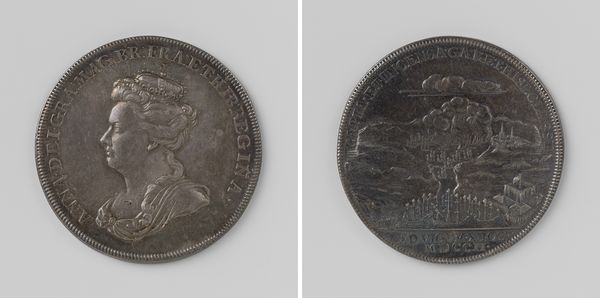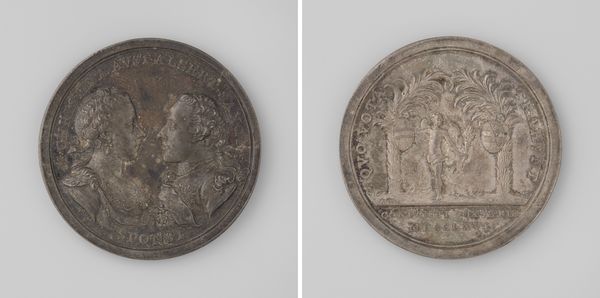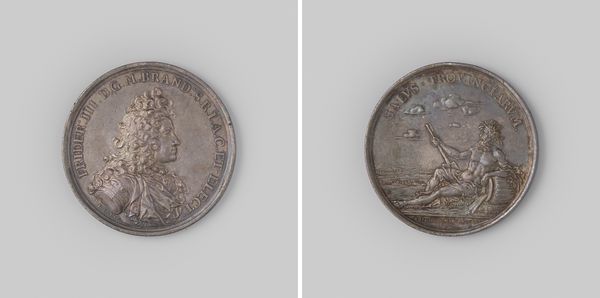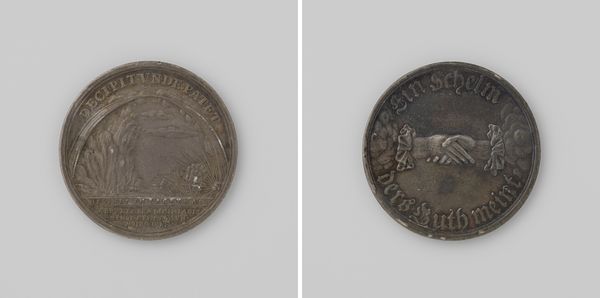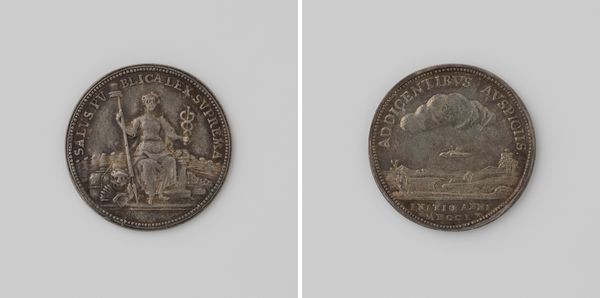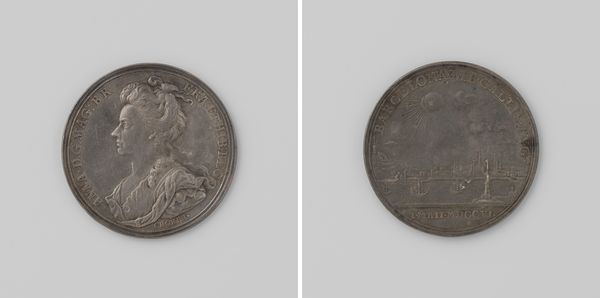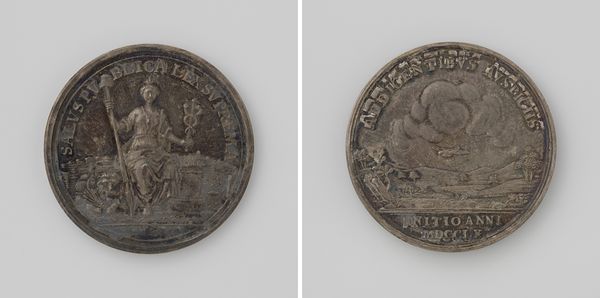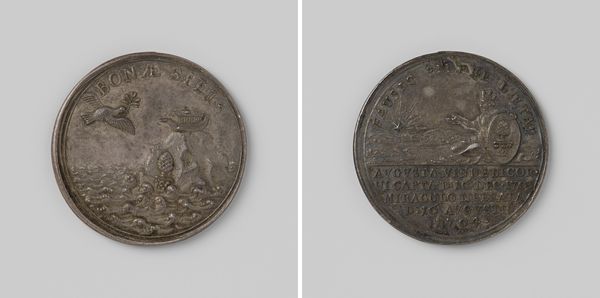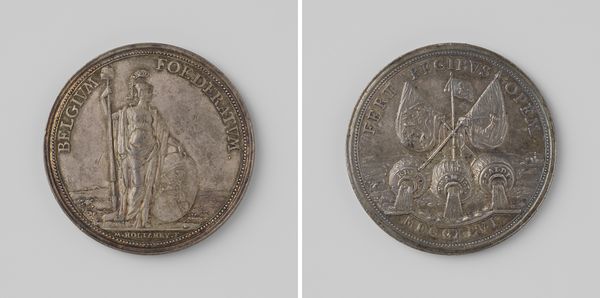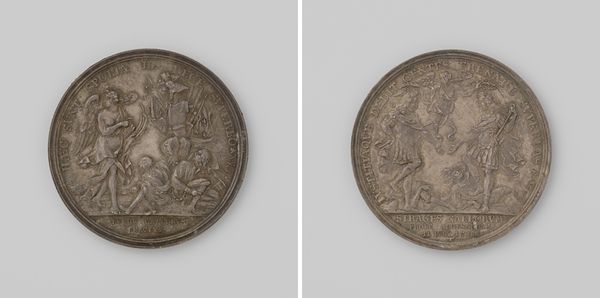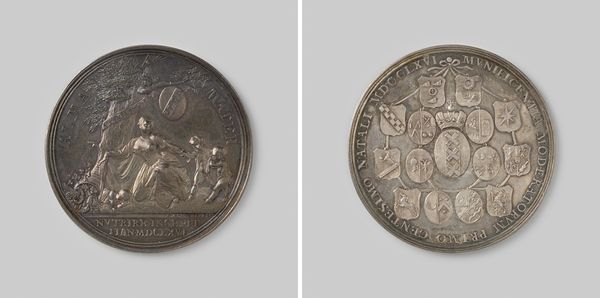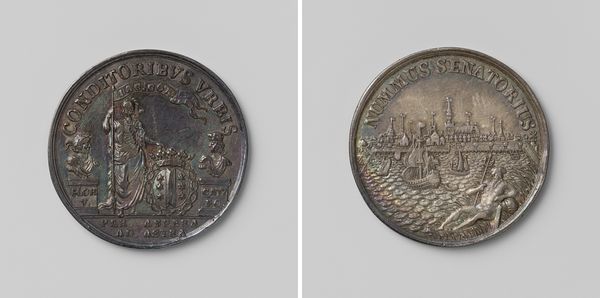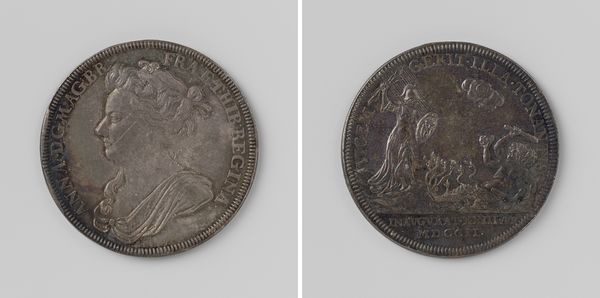
print, metal, relief, sculpture, engraving
#
portrait
#
baroque
# print
#
metal
#
sculpture
#
relief
#
sculpture
#
ceramic
#
history-painting
#
engraving
Dimensions: diameter 5.5 cm, weight 52.22 gr
Copyright: Rijks Museum: Open Domain
Curator: At first glance, I’m drawn to the texture—it looks cool to the touch, almost clinical, and the figures appear quite stoic and unyielding. Editor: What we’re looking at is a piece titled "Vrede te Passarowitz", or "Peace at Passarowitz" in English. This work by Bengt Richter was created around 1718 using metal engraving. As a piece memorializing the Treaty of Passarowitz, it's less about clinical detachment, and more a conscious decision to portray a kind of enduring stability. Curator: I see your point, given the historical context of a peace treaty! The medal’s form itself underscores the monumentality and enduring quality of such a significant diplomatic achievement, one meant for public display. What intrigues me most, though, is the conscious creation and deployment of imagery designed for political consumption. Editor: Absolutely, this work is thick with intentional choices. The imagery of the emperor, his allies and even the vanquished Ottoman Turks depicted on the medal signals an important shift. Here you see Europe seeking to exert political and military dominance at the decline of the Ottoman empire, with subtle cultural messaging being critical in shaping the perception of power. The inscription *De Christi Nominis Hostibus* can be interpreted through a revisionist lens. Curator: I'd agree. This medal offers more than just a simple celebratory marker, it represents a conscious deployment of visuals for maintaining social cohesion at a pivotal moment. How the political theater presented by this imagery affects different social groups and their understanding is what holds my focus. Editor: This piece certainly serves as a reminder of the persuasive potential of even the most seemingly simple commemorative objects. Analyzing the underlying narratives of power embedded within objects such as these allows us a vital perspective in thinking about historical memory and political ambition. Curator: Precisely. What it reveals about the socio-political contexts of its time remains pertinent today when we confront complex dynamics in the world order and diplomacy. Editor: Well said! These intricate connections highlight just how crucial and lasting the effects of this peace truly were.
Comments
No comments
Be the first to comment and join the conversation on the ultimate creative platform.
